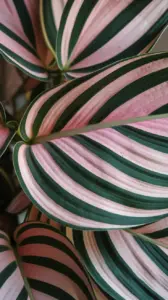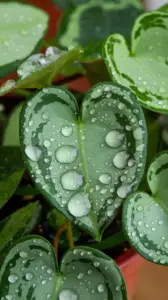Biological Features of Monstera Obliqua
Monstera Obliqua is a striking plant known for its unique biological features. Its leaves are quite distinct, often exhibiting irregular holes. This trait is a result of environmental adaptation. Additionally, the leaves can grow up to 30 inches long, showcasing a vibrant green color that captivates plant enthusiasts.
Habitat and Growth Conditions
This plant thrives in tropical climates. It naturally prefers humid environments with indirect sunlight. Monstera Obliqua can grow in various soil types, as long as there is adequate drainage. Optimizing these conditions fosters healthy growth and enhances visual appeal.
Leaf Structure
The leaves of Monstera Obliqua consist of a unique arrangement. The holes can be classified into small and large openings. These variations not only provide an aesthetic quality but also serve a functional purpose. They allow the plant to capture more sunlight while minimizing water loss.
| Leaf Size | Hole Size | Color |
|---|---|---|
| Up to 30 inches | Small to large | Vibrant green |
Moreover, this species can grow as a climbing vine. It uses aerial roots to anchor itself to surrounding structures, mimicking its natural environment. Consequently, this growth pattern allows Monstera Obliqua to thrive more effectively in the wild.
In summary, the biological features of Monstera Obliqua make it an interesting addition to any plant collection. Its adaptability and unique characteristics contribute to its popularity among plant lovers.
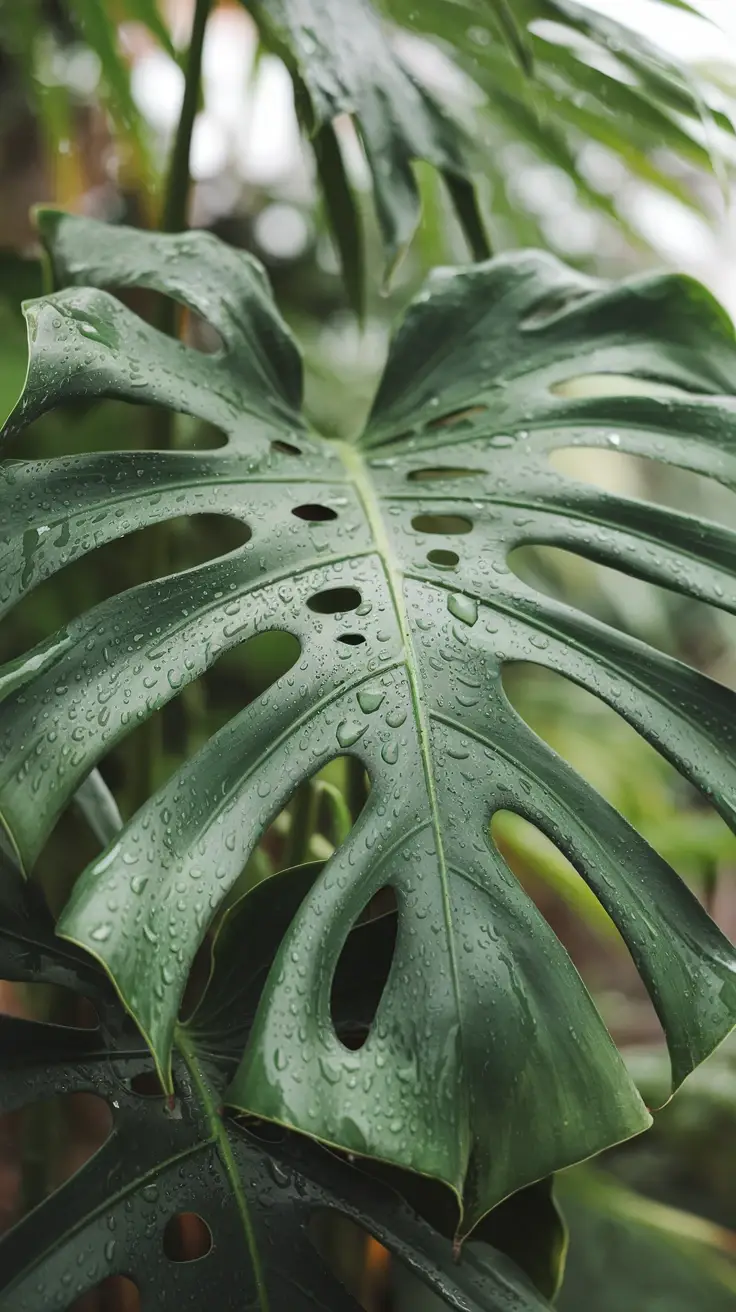
History and Cultural Significance
Monstera Obliqua is a fascinating plant with deep roots in cultural history. Originating from the rainforests of Central and South America, it has captured the hearts of plant enthusiasts globally. In various cultures, this plant symbolizes resilience and adaptability.
Historically, indigenous people utilized the Monstera leaves for crafting and creating practical items. The plant also held spiritual significance for some communities. They believed that its unique perforations and splits in the leaves represented a connection to the natural world.
As the popularity of tropical plants grew in the 20th century, Monstera Obliqua gained attention in the world of interior design. Its striking appearance made it a favorite among decorators and plant lovers alike. Additionally, this plant became a key player in the trend of urban jungles.
Currently, Monstera Obliqua enjoys worldwide popularity as a houseplant. Many plant enthusiasts cherish its beauty and low maintenance requirements. Cultivating this plant allows individuals to bring a touch of the tropics into their homes.
Here are some key cultural aspects surrounding Monstera Obliqua:
- Symbol of Growth: The plant’s ability to thrive in various environments represents growth and transformation.
- Artistic Inspiration: Its unique leaf shapes have inspired artists and designers.
- Interior Aesthetics: Monstera Obliqua enhances spaces with its striking appearance.
- Ecological Importance: This plant plays a role in its native ecosystem, supporting various wildlife species.
In summary, Monstera Obliqua not only provides aesthetic value but also contributes significantly to cultural heritage. Understanding its history deepens our appreciation for this remarkable plant.
Ideal Growing Conditions for Monstera Obliqua
Monstera Obliqua thrives in specific environmental conditions. Understanding these conditions enhances growth and overall plant health. This species prefers bright, indirect sunlight. Too much direct light can scorch its delicate leaves. Conversely, too little light leads to slow growth and smaller leaves.
The ideal temperature range for Monstera Obliqua is between 65°F and 85°F (18°C to 29°C). It’s important to keep it away from cold drafts. Temperature fluctuations stress this plant, which can affect its growth.
Humidity Levels
High humidity levels are crucial for Monstera Obliqua. A humidity level of 60% or higher promotes optimal health. You can achieve this through regular misting or using a humidifier. If humidity is too low, brown tips may appear on leaves.
Soil Requirements
Use a well-draining potting mix. A mix designed for aroids works best. Consider adding orchid bark or perlite to improve drainage. This plant cannot tolerate soggy roots; hence, ensure proper soil aeration.
Watering Needs
Water Monstera Obliqua when the top inch of soil feels dry. This typically translates to watering every 1-2 weeks. However, frequency can vary based on humidity and temperature. Overwatering can lead to root rot, a common issue in this species.
Fertilizing Guidelines
During the growing season (spring and summer), fertilize monthly. Use a balanced, water-soluble fertilizer. From fall to winter, you can skip fertilization, as the plant enters dormancy.
Light and Growth Adjustment
As the season changes, adjust your plant’s position for sunlight. Monitor leaf size and health regularly. A well-cared Monstera Obliqua exhibits larger, fenestrated leaves.
| Condition | Ideal Level |
|---|---|
| Temperature | 65°F – 85°F (18°C – 29°C) |
| Humidity | 60% or higher |
| Soil Type | Well-draining potting mix |
| Water Frequency | Every 1-2 weeks |
| Fertilizer | Monthly during spring and summer |
By meeting these ideal growing conditions for Monstera Obliqua, you can ensure a thriving, beautiful plant in your home.
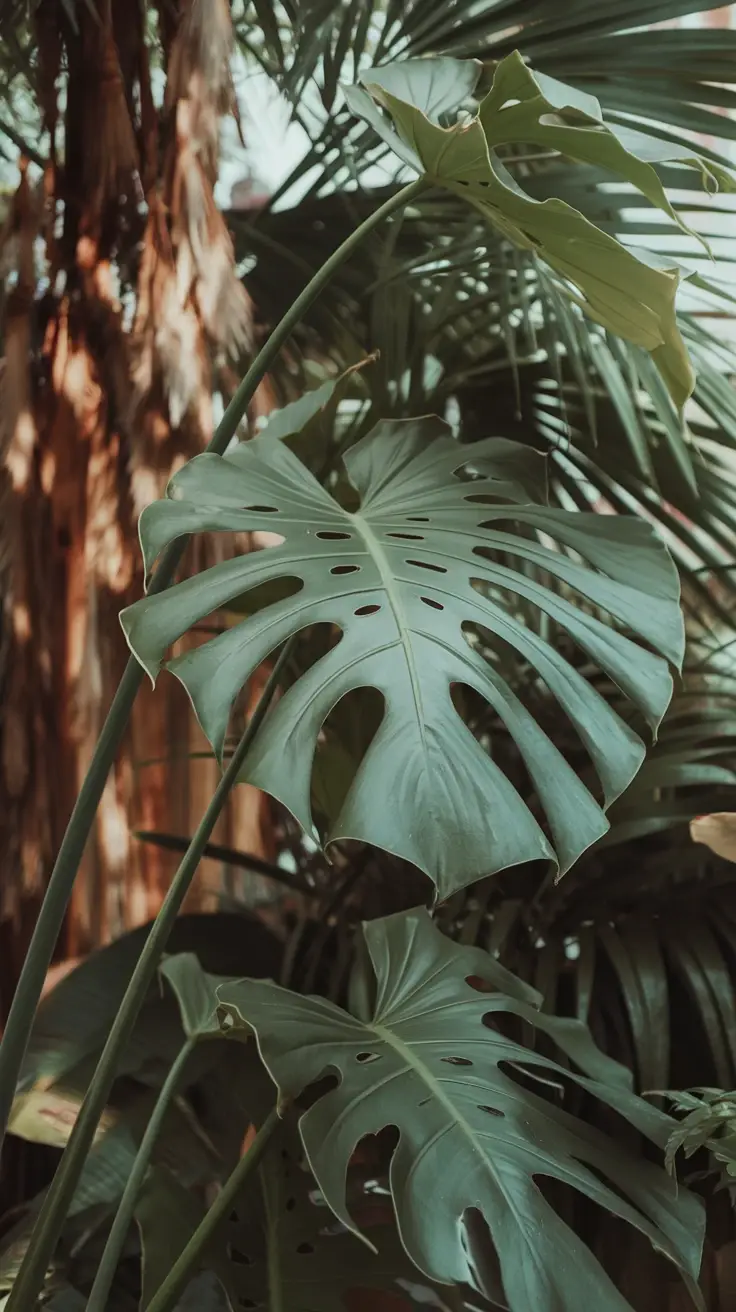
Monstera Obliqua Care and Maintenance
Monstera Obliqua requires attentive care to thrive beautifully. Adequate lighting plays a crucial role in its growth. Ideally, place the plant in bright, indirect light. Too much direct sunlight can scorch its leaves, while too little can hinder growth.
Watering is another key aspect of care. Ensure the soil remains slightly moist but not soggy. Overwatering can lead to root rot. Therefore, allow the top inch of soil to dry out between watering sessions. On average, watering once a week suffices, but adjust based on your environment.
Humidity is vital for Monstera Obliqua. This plant thrives in humid conditions, ideally above 60%. To increase humidity, consider misting the leaves regularly. Alternatively, position a humidifier nearby. Grouping plants together can also create a more humid microenvironment.
Fertilization Needs
During the growing season, which typically spans from spring to fall, fertilization becomes essential. Use a balanced liquid fertilizer every four to six weeks. Dilute the fertilizer to half strength to prevent fertilizer burn.
Soil Requirements
The right soil mix promotes healthy growth. Choose a well-draining potting mix that retains some moisture. A blend containing peat, perlite, and orchid bark works brilliantly. This combination allows for adequate aeration and drainage.
Repotting Tips
As your Monstera grows, repotting becomes necessary. Look for signs such as roots growing out of the drainage holes. The best time to repot is during the spring. Use a pot one size larger to accommodate growth.
Common Pests and Diseases
Monitoring the plant for pests is crucial. Common pests include spider mites, mealybugs, and aphids. Regularly inspect the undersides of leaves. If you spot any pests, treat them immediately with insecticidal soap.
General Care Tips
- Rotate the plant periodically to ensure even growth.
- Dust the leaves regularly to keep them clean and maximize photosynthesis.
- Provide support for tall growth using stakes or trellis.
- Be attentive to any signs of distress, such as yellowing leaves or stunted growth.
- Handle with care to avoid damaging its delicate leaves.
With proper care and attention, your Monstera Obliqua will flourish, bringing a touch of the tropics into your home.

Propagation Techniques for Monstera Obliqua
Propagating Monstera Obliqua can be a rewarding experience. The most common methods include water propagation and soil propagation. Both techniques ensure the plant thrives when executed properly.
To propagate Monstera Obliqua through water, start by selecting a healthy stem with at least one node. Cut just below the node using clean shears. Place the cutting in a jar or glass filled with water. Ensure the node is submerged while the leaves remain above the water. Change the water every week to keep it fresh.
As roots develop, you may notice small white root tips. This typically occurs within a few weeks. When the roots reach about 2-3 inches long, transplant the cutting into the soil.
Soil Propagation Tips
Soil propagation involves a few simple steps. First, select a well-draining potting mix. You can use a mix of peat moss and perlite for optimal drainage. Similar to water propagation, choose a healthy cutting with a node and a few leaves.
Next, plant the cutting directly into the moist soil. Make sure the node is buried, but the leaves should remain above the soil surface. Water gently to settle the soil around the cutting. Keep the soil slightly moist but not soggy.
Place the pot in a warm spot with indirect sunlight. This creates an ideal environment for the cutting to root. Monitor the soil moisture regularly. Be sure to avoid overwatering, which can lead to rot.
After a few weeks, check for new growth. This is a sign that your Monstera Obliqua is establishing roots. Over time, it will grow into a healthy, thriving plant.
Both water and soil propagation methods can be successful. Choose the one that suits your gardening style best. Happy propagating!

Common Problems and Solutions with Monstera Obliqua
Monstera Obliqua is a beautiful plant but can face various issues. Understanding these problems and knowing how to resolve them can ensure the plant thrives.
Common Issues
- Yellowing Leaves: This often indicates overwatering. Ensure the soil drains well.
- Dry Leaf Tips: Low humidity can cause this. Increase humidity with a humidifier or misting.
- Pests: Aphids and spider mites can infest Monstera Obliqua. Use insecticidal soap for treatment.
- Slow Growth: The plant may be root-bound or lacking nutrients. Consider repotting or feeding with fertilizer.
Solutions
To tackle yellowing leaves, decrease watering frequency. Check that the pot has drainage holes. If the plant’s roots sit in water, they may rot, leading to yellow leaves. Correct this by allowing the top inch of soil to dry before watering again.
For dry leaf tips, raise humidity levels. This plant enjoys a humid environment. A pebble tray or grouping with other plants can help improve humidity around your Monstera Obliqua.
If you spot pests, inspect the leaves regularly. Control outbreaks promptly. Apart from insecticidal soap, neem oil can also be an effective treatment.
| Problem | Symptoms | Solution |
|---|---|---|
| Yellowing Leaves | Leaves turning yellow | Adjust watering schedule |
| Dry Leaf Tips | Tips of leaves are crispy | Increase humidity |
| Pests | Webbing or visible insects | Apply insecticidal soap |
| Slow Growth | Minimal new growth | Repot or fertilize |
Regular monitoring of your Monstera Obliqua will help you catch problems early. By following these solutions, your plant will flourish and remain healthy.
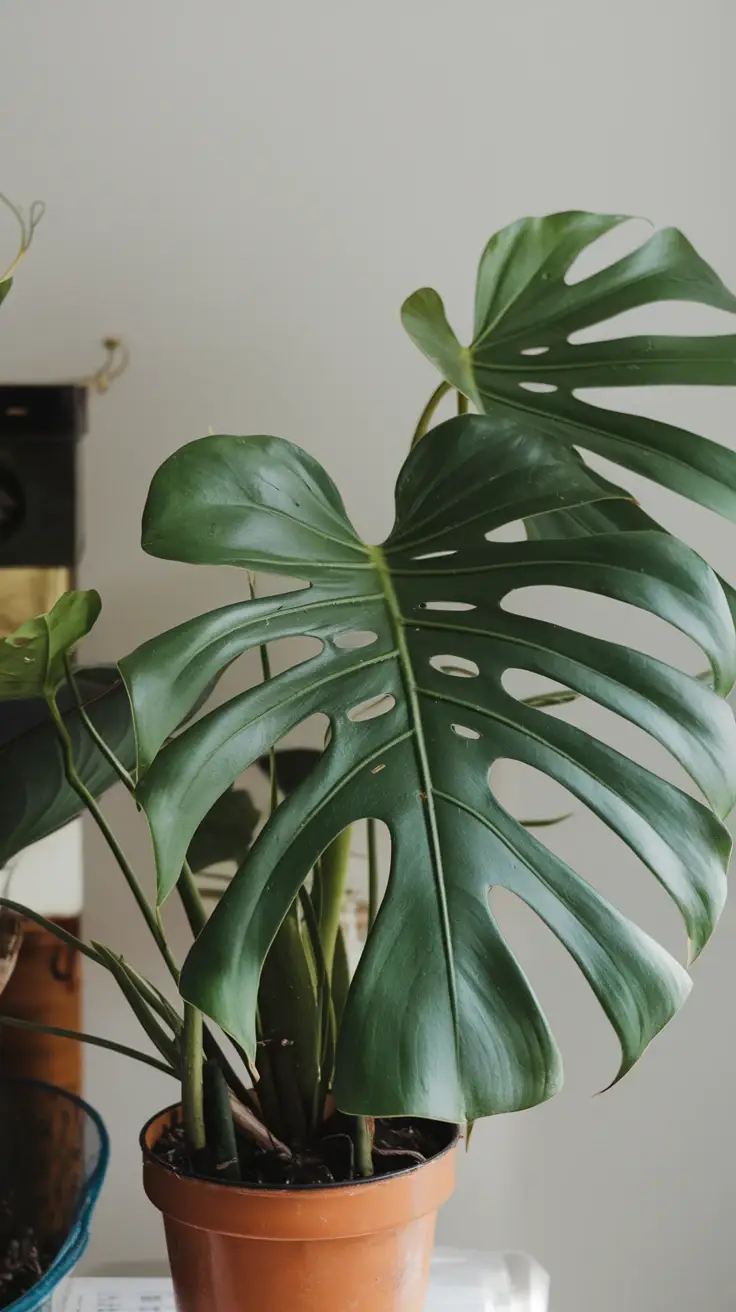
Seasonal Care Adjustments
Taking care of your Monstera Obliqua requires attention to its seasonal needs. This plant thrives with adjustments based on environmental changes. Thus, understanding these needs ensures optimal growth.
In spring and summer, your Monstera will appreciate more light and warmth. Ideally, place it near a window that provides bright, indirect sunlight. However, ensure it’s not exposed to harsh rays. During these seasons, increase the watering frequency slightly. The soil should remain moist but not soggy.
- Light: Provide bright, indirect sunlight.
- Watering: Water when the top inch of soil feels dry.
- Humidity: Maintain higher humidity levels.
- Fertilizing: Use a balanced fertilizer monthly.
In fall and winter, your Monstera may require different care. The plant will enter a dormancy phase, so reduce watering. Let the soil dry out more between waterings. Additionally, you might need to decrease fertilization frequency.
- Light: Keep it in a well-lit area, but avoid direct sun.
- Watering: Water less frequently, allowing soil to dry out.
- Temperature: Maintain warmer indoor temperatures.
Be attentive to leaf drooping or discoloration. These signs indicate the need for care adjustments.
Microclimate Setup Tips
Creating the right microclimate for Monstera Obliqua is crucial for its growth and health. This tropical plant thrives in specific conditions. Here are some tips to establish an ideal environment:
- Temperature: Keep the room temperature between 65°F and 85°F. Avoid sudden temperature fluctuations, as Monstera Obliqua prefers consistent warmth.
- Humidity: Maintain humidity levels of 60% to 80%. Consider using a humidifier or placing a tray of water nearby.
- Lighting: Provide bright, indirect light. While Monstera Obliqua can tolerate lower light, it flourishes in bright conditions.
- Airflow: Ensure good airflow around the plant. This prevents mold and mildew, promoting a healthier environment.
- Soil: Use well-draining potting soil. A mix suited for aroids, including peat, perlite, and orchid bark, works well.
- Container: Choose a pot with drainage holes. This helps prevent water logging which can lead to root rot.
For best results, monitor your Monstera Obliqua’s environment regularly. Small adjustments can lead to significant improvements in thriving. Remember, this plant not only brings beauty but demands care and attention to flourish.
Frequently Asked Questions about Monstera Obliqua
Many enthusiasts often ask about the Monstera Obliqua. This unique plant has specific needs and characteristics. Understanding these can improve care and success.
One common question is about light requirements. Monstera Obliqua thrives in bright, indirect light. Direct sunlight can scorch its delicate leaves. It also does well in low-light situations but may grow slower.
Watering is another frequent topic. The plant prefers its soil to dry out slightly between waterings. Overwatering can lead to root rot, a common issue. Therefore, monitor the soil moisture regularly.
People often wonder about temperature preferences. Monstera Obliqua enjoys warm temperatures, ideally between 65°F to 85°F. Drafts and extreme temperature changes can stress the plant.
Finally, many ask about fertilization. Using a balanced fertilizer during the growing season promotes healthy growth. Ensure to follow application guidelines carefully.
These FAQs highlight key aspects of caring for Monstera Obliqua. For any additional concerns, consult with local experts or online communities dedicated to houseplant care.
Summary and Recommendations
Monstera Obliqua is a unique and captivating houseplant. Its striking leaves exhibit a rich green hue, characterized by their natural fenestrations. This plant thrives in bright, indirect light, making it an ideal choice for indoor environments. Regular watering is essential; however, overwatering should be avoided to prevent root rot. Moreover, maintaining humidity levels will encourage optimal growth.
For best results, use a well-draining potting mix. Fertilize this plant during the growing season to promote vitality. Be vigilant about pests, as spider mites and aphids may occasionally invade. Pruning is beneficial, helping to reshape your Monstera Obliqua and encourage bushiness.
In conclusion, Monstera Obliqua is a stunning addition to any plant collection. With proper care, this plant will flourish and serve as a beautiful focal point in your home.





